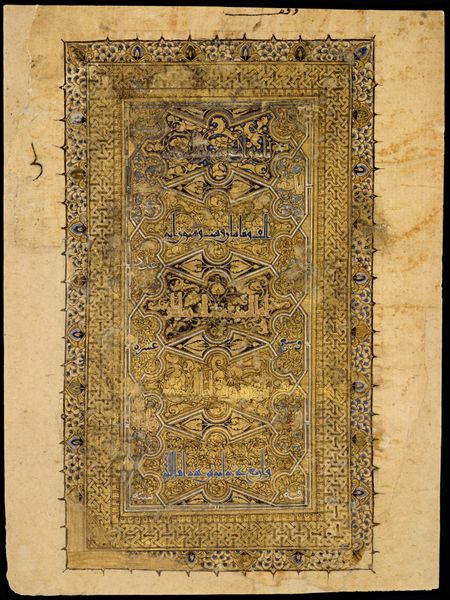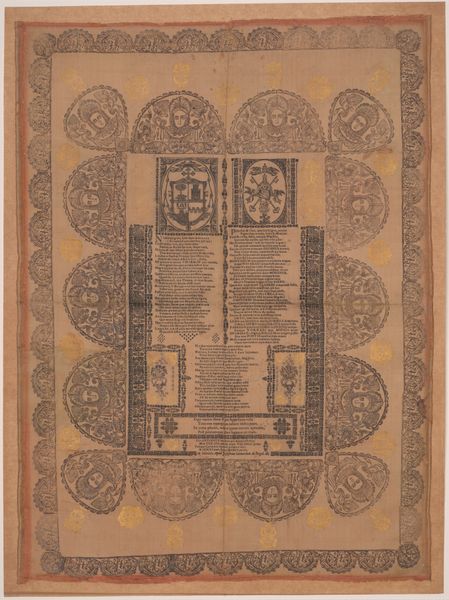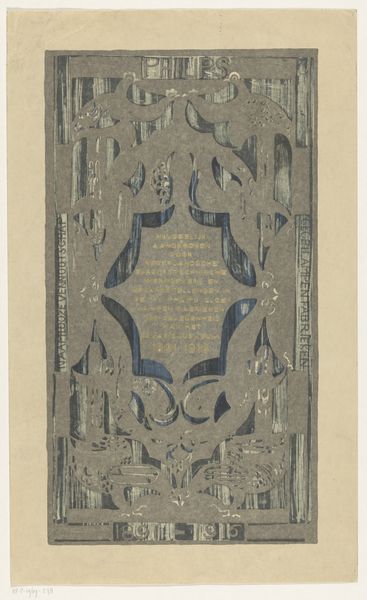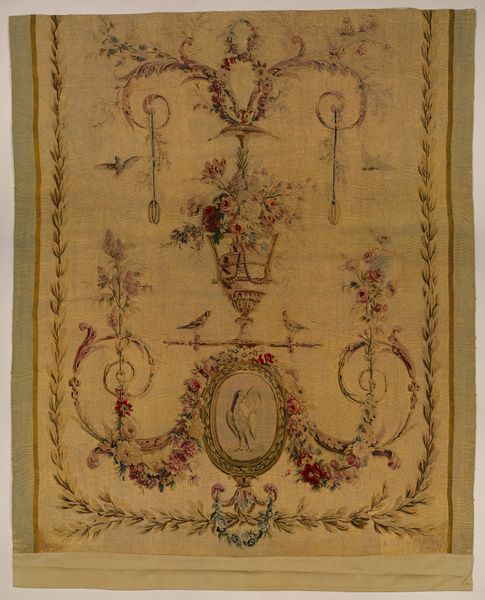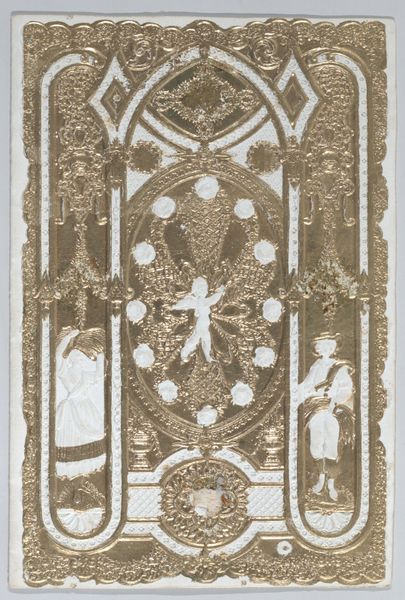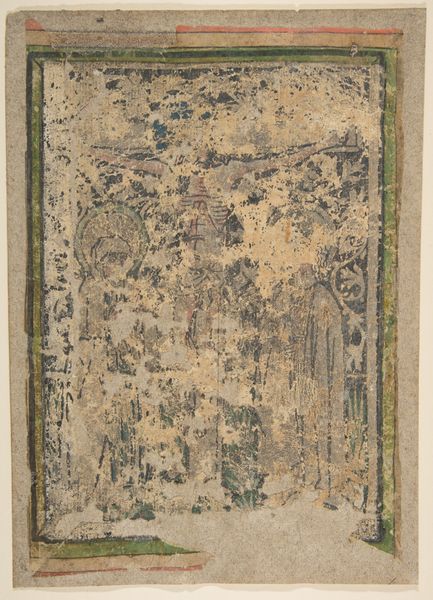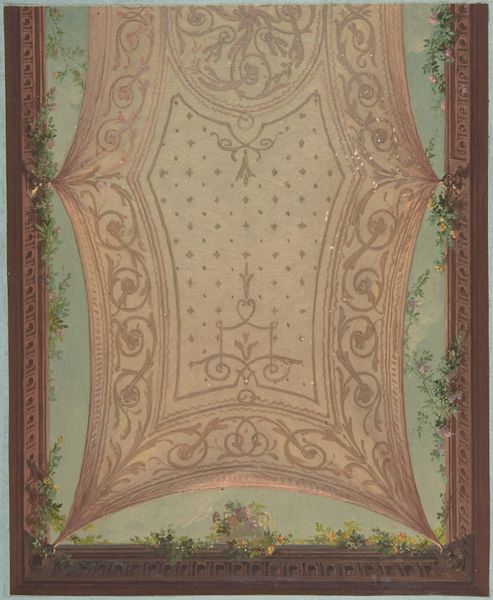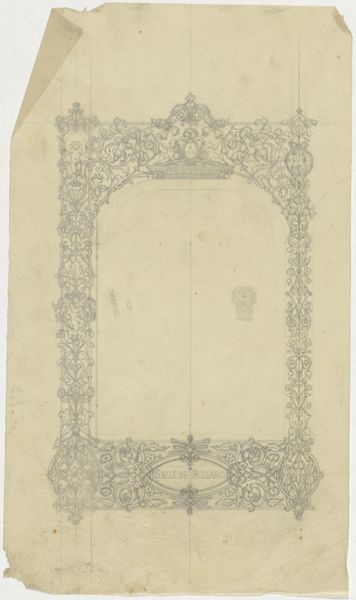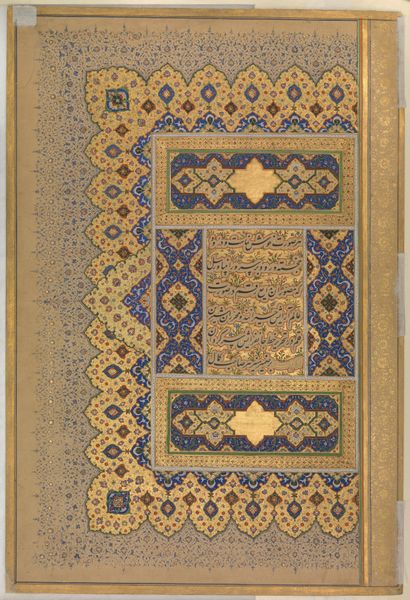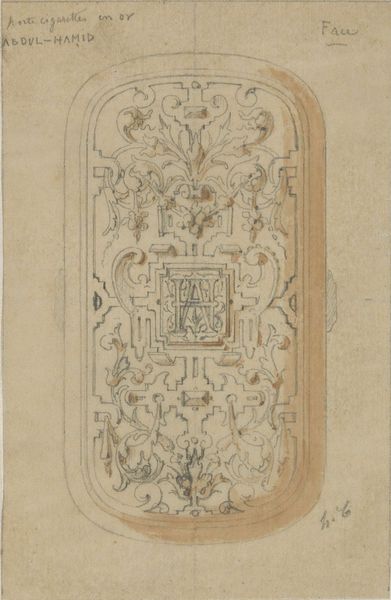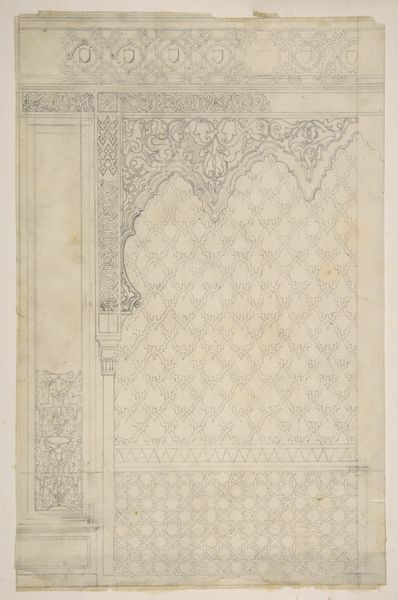
The Ten Commandments, The Lord's Prayer, and The Creed 1759
0:00
0:00
drawing, graphic-art, print, etching, paper
#
drawing
#
graphic-art
# print
#
etching
#
paper
#
text
#
traditional architecture
#
history-painting
#
academic-art
Dimensions: Framed: 14 1/2 × 11 in. (36.8 × 27.9 cm)
Copyright: Public Domain
Curator: This etching from 1759 by Thomas Hunter presents "The Ten Commandments, The Lord's Prayer, and The Creed." At first glance, the overwhelming presence of text is rather striking, wouldn't you say? Editor: Absolutely. The visual texture created by the dense script is intriguing, like an intricate tapestry of letters. The architecture motif also draws my eye – the text organized like tablets supported by ornate columns, an interesting structural framework. Curator: That framework evokes significant meaning within the socio-political climate of its time. The piece visually asserts the dominance and stability offered by religious and moral law, something Hunter perhaps saw as essential for social cohesion within colonial society. Editor: I appreciate your historical reading. Focusing solely on the form, the use of symmetrical arrangements – two columns, the Lord’s Prayer mirroring the Creed – contributes to the work’s inherent stability and order. Curator: Order that also imposed very specific roles and expectations within a society grappling with evolving colonial identities. The visual presence of these tenets served as a constant, if not oppressive, reminder. Editor: Still, there's an undeniable visual harmony, though the palette is restrained. Notice how the use of curvilinear lines in the architectural details provides a softened contrast to the severe rectilinearity of the blocks of text. Curator: A softening which maybe aimed to mediate these texts within a broader audience. Think about how these fundamental doctrines played out in people's lives—everything from personal interactions to governance would be influenced. How much of their meaning derives from the visual setting in which Hunter puts them? Editor: An interesting point, certainly. Looking again, it appears he skillfully directs the eye through visual organization; there’s a compositional strategy at play to make each passage equally accessible and aesthetically considered. Curator: Indeed. Examining this work beyond its aesthetics and the text itself we uncover conversations surrounding identity formation, moral frameworks and colonial power structures within the Anglican Church. Editor: Quite right. Reflecting on this work’s meticulous rendering and balanced form offers its own profound commentary. Curator: And when taken together? An echo of voices of both structure and the social contexts surrounding their construction and lasting impact.
Comments
No comments
Be the first to comment and join the conversation on the ultimate creative platform.
